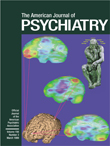Acute Stress Response and Posttraumatic Stress Disorder in Traffic Accident Victims: A One-Year Prospective, Follow-Up Study
Abstract
OBJECTIVE: This study was designed to assess the natural course of posttraumatic symptoms formation, as well as the degree to which acute stress reactions predict later posttraumatic stress disorder (PTSD) in injured traffic accident victims. METHOD: A prospective, 1-year follow-up study was carried out on 74 injured traffic accident victims and a comparison group of 19 patients who were hospitalized for elective orthopedic surgery. Participants were interviewed within the first week following the accident, and follow-up interviews were performed 1, 3, 6, and 12 months after the accident. At 12 months, a structured clinical interview was administered to determine a formal DSM-III-R diagnosis of PTSD. RESULTS: Twenty-four (32%) of the 74 traffic accident victims, but none of the 19 comparison subjects, met DSM-III-R criteria for PTSD at 1 year. Traffic accident victims who developed PTSD had higher levels of premorbid and comorbid psychopathology. Levels of posttraumatic symptoms were significantly higher from the outset in the subjects who developed PTSD and worsened progressively over the first 3 months, in contrast to subjects without PTSD, who manifested gradual amelioration of symptoms during this time. Existence of posttraumatic symptoms immediately after the accident was a better predictor of later PTSD than was accident or injury severity. CONCLUSIONS: In this study, a significant portion of injured traffic accident victims manifested PTSD 1 year after the event. The development of PTSD at 1 year can be predicted as early as 1 week after the accident on the basis of the existence and severity of early PTSD-related symptoms. However, the first 3 months following the accident appear to be the critical period for the development of PTSD. (Am J Psychiatry 1999; 156:367–373)



